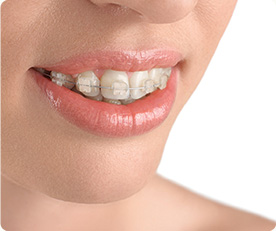White spots showing up after braces can be frustrating. You finally get your braces off, expecting a smooth, even smile—then you notice those faded patches on your teeth. What are they? Are they permanent? And most importantly, can you fix them?
These marks are usually a sign of enamel decalcification, which means the minerals in your teeth have started to wear away—often from plaque buildup around brackets. The spots might look worrying, but they’re more common than you think. And in many cases, they’re not permanent.
Many patients at Holt Orthodontics bring this up after treatment, wondering what went wrong and what they can do about it. The good news? There are ways to prevent white spots from forming during braces—and steps you can take to treat them if they’ve already appeared.
What Are White Spots and Why Do They Happen?
White spots on teeth after braces often catch people off guard. These pale or chalky-looking patches can make your teeth look uneven, and it’s natural to wonder what caused them. In most cases, they’re a sign that the enamel—the outer layer of your tooth—has lost some of its minerals. This happens when plaque sits too long on the surface, especially around brackets, and starts to wear the enamel down.
These spots don’t always mean permanent damage. Some are light and can fade over time with good oral care and fluoride products. Strengthening the enamel early can make a big difference. But when the mineral loss goes deeper, the spots may stick around longer or get worse.
That’s when a dentist or orthodontist might suggest treatments like polishing, special pastes, or even a cosmetic fix. The key is not to wait too long. The sooner you act, the better your chances are of keeping your teeth looking strong and healthy.
Knowing what white spots are and what they mean is the first step. The good news is there are ways to deal with them—and in many cases, they can get better with the right care and a little help from your dental team.
Top Causes of White Spots After Braces
There’s more than one reason white spots on teeth after braces can show up—and most of them have to do with how teeth are cleaned and cared for during treatment. If you’re wondering what might’ve caused yours, here are the most common factors that play a role.
1. Plaque Buildup Around Brackets
Braces have small spaces where food and bacteria can easily get stuck. When plaque builds up around the brackets, it creates acid that slowly eats away at the minerals in your enamel. These acids don’t just go away on their own—they stick around and start damaging the surface of the teeth. That’s often how those white patches begin to form.
2. Inconsistent Oral Hygiene
Brushing and flossing with braces isn’t easy, and missing just a few spots regularly can lead to trouble. If plaque isn’t cleaned off well, it starts to damage the enamel under and around the brackets. Even when you think you’re brushing enough, certain areas may be left behind if the tools or technique aren’t right.
3. Sugary or Acidic Foods and Drinks
Sodas, juices, candies, and sports drinks might seem harmless in small amounts, but they feed the bacteria that create acid. And it’s this acid that leads to enamel erosion. When you snack or sip on these often, it gives that acid more chances to do damage—especially with braces on.
4. Skipping Dental Cleanings
Even if you brush every day, missing regular dental checkups makes it easy for plaque to harden into tartar. Once it hardens, it’s much harder to remove at home. This hardened buildup traps more bacteria, which increases the risk of white spots forming around the braces.
5. Dry Mouth
Saliva plays a big part in keeping your mouth healthy. It helps wash away food and bacteria and also rebuilds enamel minerals. If you have dry mouth—maybe from medications or mouth breathing—your teeth lose that protection. Less saliva means more acid can sit on your teeth and start causing damage.
6. Longer Treatment Time
The longer braces are on, the longer teeth are exposed to the risk of plaque buildup. That gives the bacteria more chances to weaken the enamel. A longer treatment doesn’t guarantee white spots, but it does raise the chances—especially without good hygiene.
7. Naturally Weak Enamel
Some people just have softer enamel to begin with. Even with good brushing habits, their teeth may be more sensitive to plaque and acid. In these cases, extra care is needed to keep the enamel strong during braces.
How to Prevent White Spots While Wearing Braces
White spots on teeth after braces don’t have to be part of the process. With a few smart habits, you can lower the chances of them showing up—and keep your teeth healthy through every stage of treatment.
Practice Strong Daily Hygiene
Brushing after every meal helps remove leftover food and plaque before it has a chance to sit on your teeth. Using fluoride toothpaste is important too—it helps strengthen the enamel and protect it from acid. If flossing is tricky with braces, try tools like floss threaders, interdental brushes, or a water flosser to get between the wires and around brackets.
Be Mindful of What You Eat
Certain foods and drinks make it easier for white spots to form. Sodas, juices, sticky candy, and anything high in sugar or acid can wear down enamel over time. Cutting back on those options—or brushing soon after having them—can help protect your teeth during treatment.
Don’t Skip Routine Dental Visits
It’s easy to forget appointments when you’re busy, but professional cleanings and checkups are key. Dentists can spot early signs of enamel damage before white spots become visible. Ask if a fluoride treatment would help give your teeth extra protection.
Use the Right Tools
Some electric toothbrushes are designed for braces and clean better than regular ones. Fluoride mouth rinses can also help strengthen enamel. If you’re not sure what to use, your orthodontist can recommend what works best for your smile. Small steps each day go a long way.
What to Do If You Already Have White Spots
Noticed white spots on my teeth after braces and wondering what to do now. You’re not stuck with them. There are a few ways to make them look better—and in some cases, even help them fade.
1. Start With Remineralization Treatments
Dentists often suggest using fluoride products to help strengthen weakened enamel. These might include:
- Fluoride paste
- Prescription-strength toothpaste
- In-office fluoride varnishes
These options work to rebuild lost minerals and may reduce the appearance of early spots.
2. Ask About Microabrasion
This is a gentle cosmetic treatment where a dentist polishes the surface of the tooth. It works best for shallow spots that haven’t gone too deep. While it won’t help every case, it can make light marks much less noticeable.
3. Consider Icon Resin Infiltration
This non-invasive method fills in porous enamel using a special clear resin. It blends the white spot with the natural color of your tooth—without any drilling. It’s quick, painless, and great for spots that won’t fade on their own.
4. Be Cautious With Whitening
Whitening might seem like the easiest fix, but it can actually make white spots more visible. It’s usually better to treat the spots first, then consider whitening later if you still want to brighten your teeth.
When It’s Time to Talk to a Dental Professional
If the white spots on your teeth after braces are getting bigger, causing sensitivity, or bothering you when you smile, it’s a good idea to talk to a dental professional. Some spots may fade on their own but others can get worse if they’re not treated early.
At Holt Orthodontics, we help patients figure out what’s going on and what steps to take next. Whether it’s fluoride treatments, cosmetic options, or just simple advice, getting the right care early can make a big difference. Don’t wait too long—your teeth will thank you for it.
Conclusion
White spots on teeth after braces are more common than most people think. They don’t mean you did something wrong, and they don’t mean your smile is ruined. These spots can show up for different reasons, but with good habits and early care, they can often be prevented—or treated if they’ve already appeared.
The best way to avoid them is by keeping up with brushing, watching what you eat, and seeing your dentist regularly. But if they’re already there, don’t stress. Treatments like fluoride, polishing, or resin can help fix the look of your teeth and protect them going forward.
Getting ahead of the problem is what matters. The sooner you catch it, the easier it is to treat. That’s why checking in with your orthodontist or dentist early on makes such a difference.
Stronger Smiles Start Here at Holt Orthodontics
At Holt Orthodontics, we’re here to help you care for your teeth before, during, and after braces. From personalized hygiene guidance to post-treatment support, our goal is a healthy, confident smile that lasts.
Contact us today to schedule a consultation and take the next step in protecting your smile.




